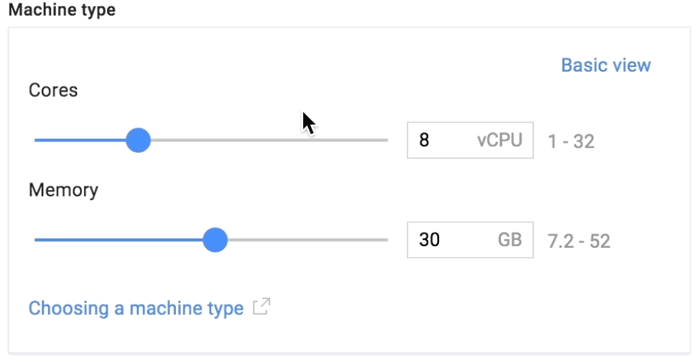Google launched a new way of buying virtual machines in its cloud today.
No matter whether you choose the Google Cloud Platform, AWS, Azure or another player, the way you buy virtual machines is pretty much always the same: you pick from a limited set of pre-configured CPU and RAM options on machines that are either optimized for compute or memory.
With the newly launched beta of Custom Machine Types for Google’s Compute Engine, though, you will be able to pick exactly how many virtual CPUs (vCPUs) and how much RAM you want for you machine.

Maybe you’ve outgrown the virtual machine with two vCPUs. Typically, you would have to step up to a machine type with four vCPUs, even if you only needed three. Because you don’t have a choice, you end up paying for more power than you need.
With its new Custom Machine Types, Google lets you specify exactly how many vCPUs (up to 32) and how much memory you need (up to 6.5 GiB per vCPU — Google likes to be precise, so it doesn’t use ‘gigabyte’ and instead specifies the number of gibibytes). If your needs change — as they inevitably will — you can adjust the number of cores and memory as needed.
Here is an example of what this looks like in terms of pricing:
The prices in this example are per-month costs for instances that run 100 percent of the month with Google’s sustained-use discount applied. Like all of Google’s virtual machines, Custom Machine Types feature per-minute billing, too, and you will be able to get extra discounts for using preemptible machines as well.
In the U.S. region, every vCPU hour will cost $0.03492 and every GiB of RAM will cost $0.00468 per hour. For preemptible machines, those prices drop to $0.01002 per vCPU/hour and $0.00156 per GiB/hour. The prices for Google’s European and Asian regions are a little bit higher ($0.03841 vs. $0.03492 per vCPU hour, for example).
Support for custom machine types is already available in Google’s command line tools and through its API. The company is still in the process of rolling out a graphical interface for setting these machines up in the Google Developer Console, but that, too, should be available in the next couple of days.
Developers will be able to choose between CentOS, CoreOS, Debian, OpenSUSE and Ubuntu as the operating systems for these machines.

